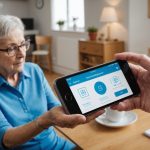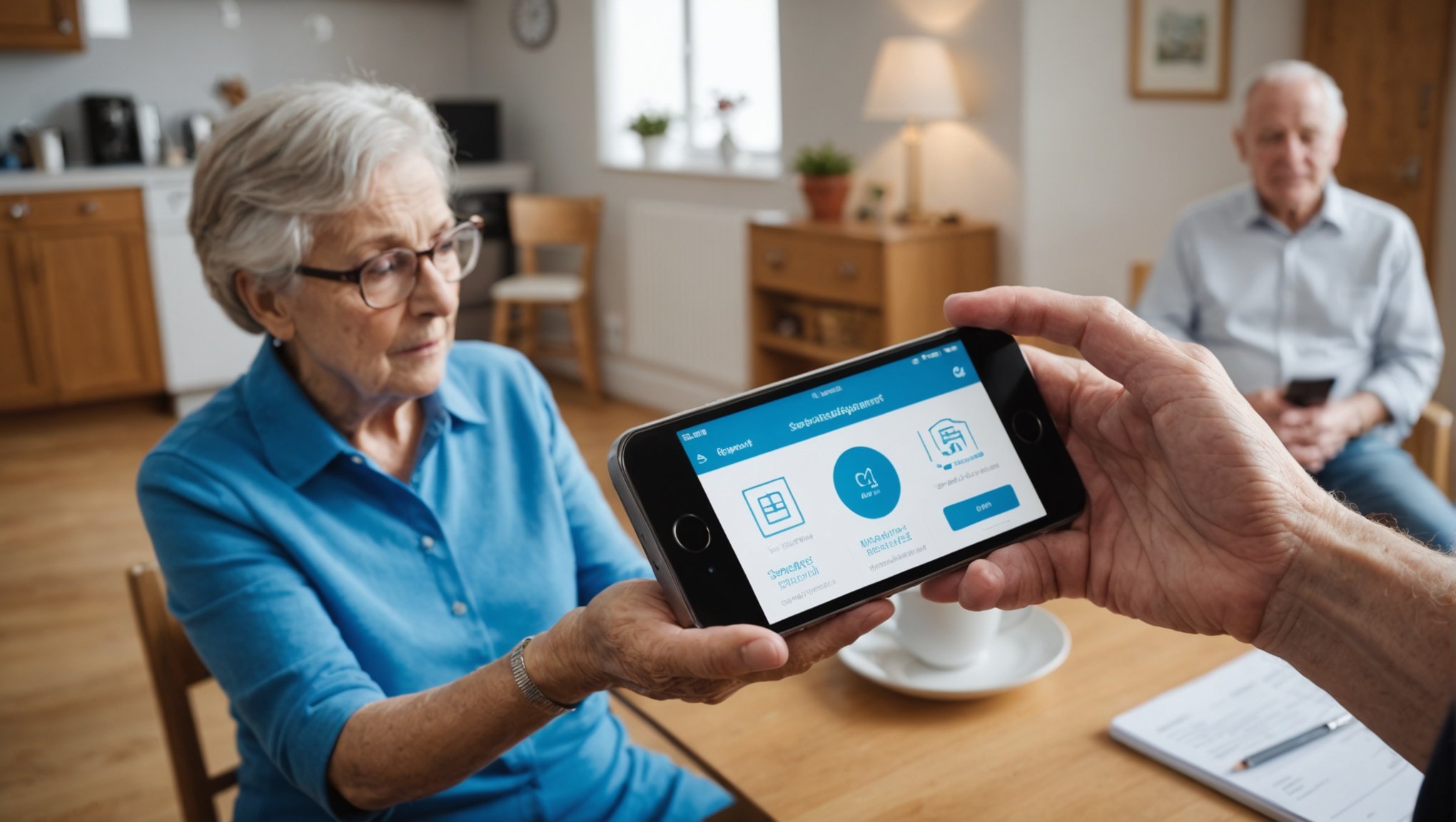Smartphone technology offers innovative solutions for elderly care, transforming the way families manage their loved ones' well-being. By integrating smart home devices, caregivers can enhance safety, monitor health, and improve daily routines. Imagine receiving instant notifications about unusual activity or easily adjusting the home environment with a single tap. This guide explores actionable strategies to harness technology, providing peace of mind for caregivers while promoting independence for seniors. Embrace the future of elderly care and discover how a smartphone can change lives.
Overview of Smart Home Technology in Elderly Care
Smart Home Technology is revolutionising elderly care by integrating advanced systems into homes to enhance safety and convenience. At its core, smart home technology involves interconnected devices and systems that automate tasks and monitor environmental conditions. These technologies are particularly significant for elderly individuals, as they address common challenges associated with aging.
Also to discover : What Are the Best Practices for Using Smartphones for Mobile Photography?
The importance of smart home solutions for the elderly cannot be overstated. They provide a means for older adults to maintain their independence while ensuring their safety and well-being. For instance, smart sensors can detect falls or unusual activity, alerting caregivers or family members immediately. This rapid response capability is crucial in preventing prolonged periods without assistance.
Benefits of smart home technology in elderly care are manifold. Firstly, safety is enhanced through features like automated lighting and security systems, reducing the risk of accidents. Secondly, convenience is improved by automating daily tasks, such as adjusting thermostats or managing medication schedules. Lastly, these solutions empower the elderly to live independently, offering peace of mind to both the individuals and their families. By embracing smart home technology, we can significantly improve the quality of life for the elderly.
In parallel : Mastering Smart Home Lighting: A Complete Guide to Managing Your System with Voice Commands
Essential Smart Home Devices for Elderly Care
Incorporating smart home devices into elderly care can significantly enhance elderly safety and improve the quality of life. Among the most impactful technologies are smart speakers and voice assistants. These devices allow seniors to control home automation systems with ease, using simple voice commands to adjust lighting, manage reminders, or even contact loved ones. This hands-free interaction is particularly beneficial for individuals with mobility or dexterity challenges.
Smart security systems play a crucial role in safeguarding elderly individuals. Equipped with cameras, alarms, and smart door locks, these systems provide real-time monitoring and alerts. They ensure that any unusual activity is promptly addressed, offering peace of mind to both the elderly and their families. For example, smart door locks can be programmed to allow access to caregivers while keeping intruders at bay.
Smart health monitoring devices, such as sensors and wearables, are invaluable in tracking vital signs and daily activity. These devices can monitor heart rate, sleep patterns, and even detect falls, providing critical information to healthcare providers. By integrating these technologies into daily life, seniors can achieve greater independence while maintaining their health and safety.
Integrating Smart Home Devices with Smartphones
Integrating smart home devices with smartphone apps creates a seamless home management experience. To begin, ensure your smartphone is compatible with the smart devices you plan to use. This often involves checking the operating system requirements and supported app versions.
Device integration starts with downloading the relevant app from your device's app store. Follow the installation prompts, granting necessary permissions for optimal functionality. Once installed, open the app and create an account if required.
Next, proceed with pairing your devices. Ensure both your smartphone and smart device are connected to the same Wi-Fi network. Use the app's setup wizard to add devices, following the step-by-step guide to complete the integration.
For a seamless user experience, consider these tips:
- Regularly update apps and device firmware to access the latest features and security patches.
- Organise devices into groups or rooms within the app for easier management.
- Customise notifications to receive alerts relevant to your needs.
By understanding compatibility and following these steps, users can efficiently manage their smart homes through their smartphones, enhancing convenience and control.
User-Friendly Applications for Caregivers
Caregiver apps are transforming how caregivers manage their responsibilities, offering tools for monitoring and communication. These applications streamline tasks, ensuring caregivers can provide effective support.
Among the top caregiver apps, features such as real-time health monitoring, medication reminders, and secure messaging stand out. These features enhance communication, allowing caregivers to stay informed and make timely decisions. For instance, some apps offer video calling, enabling face-to-face communication even from afar, which is vital for maintaining personal connections.
User reviews highlight practical use cases where these apps have made a difference. Many caregivers appreciate the ability to track health metrics and receive alerts if any irregularities are detected. This proactive approach to monitoring ensures that caregivers can address potential issues before they escalate.
Moreover, the convenience of having all relevant information in one place simplifies caregiving duties. Apps that integrate with smart home devices further enhance the caregiving experience, providing a comprehensive solution for managing elderly care. By leveraging these tools, caregivers can offer better support and improve the quality of life for those they care for.
Practical Tips for Utilizing Smart Home Technology
Implementing smart technology tips can significantly enhance everyday use for elderly support. Start by integrating automation into daily routines to simplify tasks. For instance, automate lighting schedules to ensure rooms are well-lit at specific times, reducing the risk of falls. Similarly, smart thermostats can adjust temperatures according to preferences, maintaining comfort without manual intervention.
Customising settings to fit individual needs is essential. Tailor smart home devices to accommodate specific requirements, such as adjusting voice assistant sensitivity for those with hearing difficulties. This personalisation ensures the technology is both accessible and effective.
Encourage elderly individuals to engage with technology by introducing devices gradually. Begin with user-friendly gadgets like smart speakers, which respond to simple voice commands. This approach builds confidence and familiarity, paving the way for more advanced technology integration.
To foster independence, involve seniors in setting up and managing their devices. This not only empowers them but also enhances their understanding and comfort with the technology. Remember, the key to success is making technology an integral part of daily life, ultimately improving safety, convenience, and quality of life.
Case Studies: Successful Smart Home Implementations
Exploring real-life examples of smart home technology in elderly care reveals its transformative impact on daily living. In one notable case study, a family integrated smart sensors and voice assistants to monitor their elderly mother's health. The system's ability to detect falls and unusual activity significantly reduced the caregiver's workload, allowing them to focus on other essential tasks.
Another family employed smart lighting and security systems to enhance safety and independence. Automated lighting schedules ensured well-lit pathways, reducing fall risks, while smart locks provided secure access for caregivers. This setup not only improved safety but also offered peace of mind to family members.
Key lessons from these implementations include the importance of tailoring technology to individual needs and involving seniors in the setup process. Families found that gradual introduction of devices increased acceptance and usability. By customising settings, such as adjusting voice command sensitivity, they ensured the technology was accessible and effective.
These smart home case studies demonstrate the potential for enhancing elderly care. Through thoughtful integration, families can achieve a balance between safety, independence, and reduced caregiver burden.
Challenges in Smart Home Management for Elderly Care
Navigating smart home challenges in elderly care requires addressing both technical and personal barriers. One common obstacle is the gap between elderly needs and technology literacy. Seniors often face difficulties understanding and using advanced devices, leading to user resistance. This resistance can stem from fear of the unfamiliar or concerns about privacy and data security.
Caregivers and family members must bridge this gap by providing clear, step-by-step guidance and offering reassurance about the safety and benefits of smart home technology. Personalised training sessions can help build confidence and familiarity, reducing resistance over time.
Another significant challenge lies in the installation and operation of smart devices. Many elderly users struggle with the complexity of setting up and maintaining these systems. To combat this, caregivers can adopt strategies such as hiring professional installers or utilising user-friendly devices with intuitive interfaces.
By understanding these technology barriers and implementing supportive strategies, caregivers can enhance the effectiveness of smart home solutions in elderly care. This approach not only improves the quality of life for seniors but also alleviates caregiver burdens, ensuring a safer and more independent living environment.
Safety Considerations in Smart Home Setup
When setting up smart home technology, elderly safety should be a top priority. Ensuring that smart devices are secure and reliable involves implementing key safety guidelines.
Smart home security begins with creating strong, unique passwords for each device. This simple step is crucial to protect against unauthorised access and potential data breaches. Avoid using easily guessed passwords and consider using a password manager for added security.
Regular updates and maintenance of smart devices are essential to ensure their continued safety and efficiency. Manufacturers frequently release updates to fix vulnerabilities and improve performance, so keeping devices updated is a must.
In addition to password protection, safeguarding elderly safety involves monitoring the privacy settings of each device. Ensure that only necessary permissions are granted and disable any features that might compromise privacy.
Data protection is another critical aspect of smart home security. Be cautious about sharing personal information and regularly review the data privacy policies of the devices and apps you use. By following these safety guidelines, you can create a secure and supportive environment for elderly individuals, enhancing their safety and independence.
Future Trends in Smart Home Technology for Elderly Care
As we look to the future, smart home innovations in elderly care technology promise to revolutionise the way we support the aging population. Emerging technologies are set to enhance integration and automation, making homes safer and more efficient.
One significant trend is the role of AI and machine learning. These technologies enable systems to learn from patterns and predict needs, offering personalised care solutions. For example, AI can analyse daily routines to adjust lighting or temperature, ensuring comfort without manual input.
Predictions indicate that advanced integration will become more seamless, with devices communicating across platforms effortlessly. This will allow for more comprehensive monitoring and management of health and safety, reducing caregiver stress.
Furthermore, the potential impact of smart home innovations extends to remote healthcare. Telehealth services integrated with home systems can provide real-time health data to medical professionals, facilitating timely interventions.
In summary, the future of elderly care technology is bright, with AI and machine learning driving innovation. These advancements promise to enhance the quality of life for seniors, offering greater independence and peace of mind. As these trends evolve, they will undoubtedly reshape the landscape of elderly care.
Resources for Caregivers and Families
Navigating the complexities of elderly care can be daunting, but numerous caregiver resources are available to provide support and guidance. Organisations such as AARP and the Family Caregiver Alliance offer comprehensive support networks and educational material to assist caregivers in their roles. These platforms provide valuable information on managing daily caregiving tasks, understanding legal and financial considerations, and enhancing the well-being of both caregivers and care recipients.
For those seeking to deepen their understanding, a range of recommended reading and online courses for caregivers are available. Websites like Coursera and Udemy host courses covering essential topics such as dementia care, stress management, and effective communication strategies. These resources empower caregivers with the knowledge and skills needed to provide high-quality care.
Additionally, community resources can be invaluable, particularly in technology assistance and training. Local senior centres and libraries often offer workshops on integrating smart home technology, ensuring caregivers are equipped to leverage these tools effectively. By tapping into these support networks and educational material, caregivers and families can enhance their caregiving experience, ensuring a safer and more supportive environment for elderly individuals.











